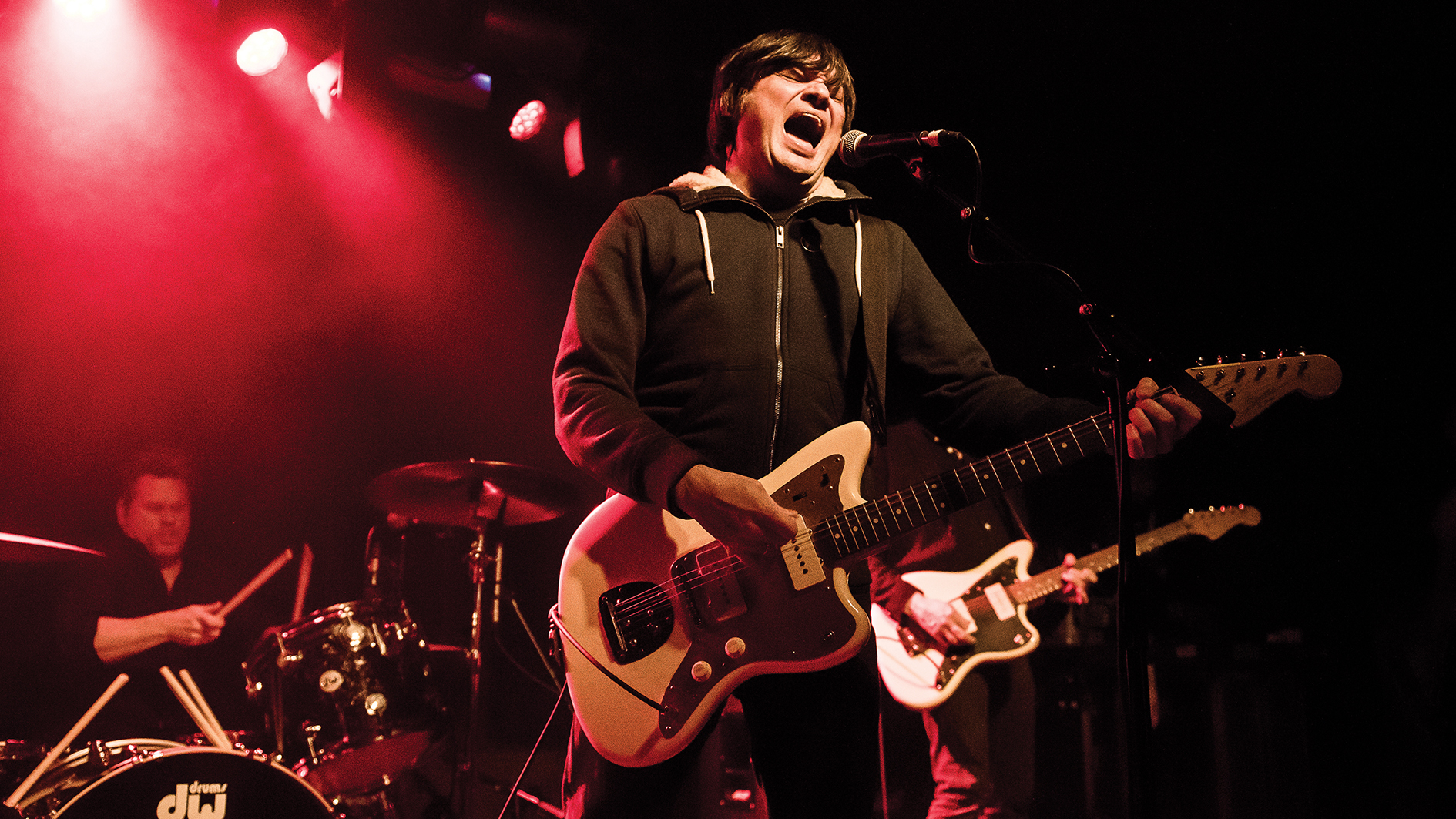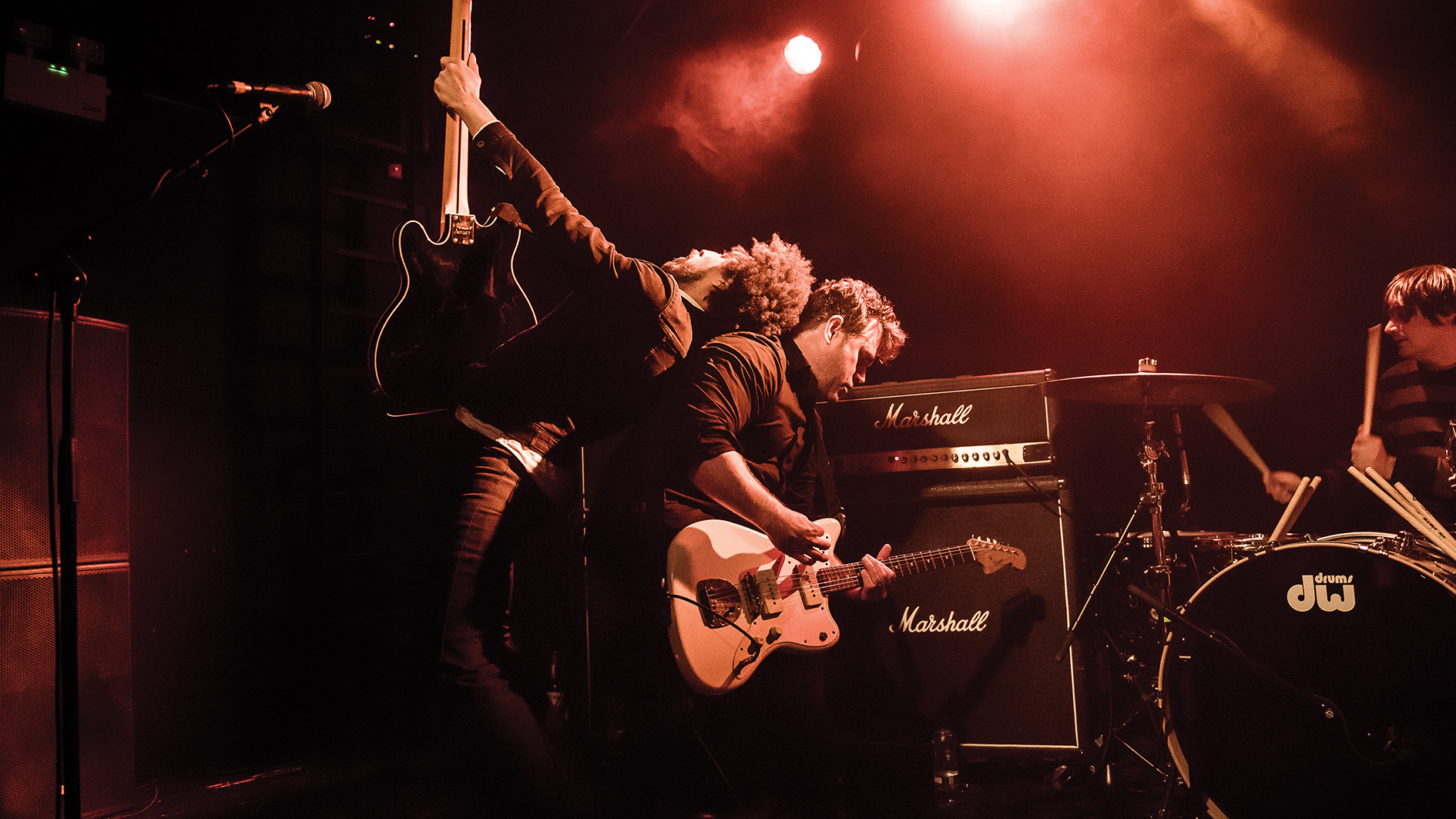…And You Will Know Us By the Trail of Dead: “We’ve just become gearheads in the last couple years. Before we were like, ‘Whatever, if you plug it in and it works, f**k it!’”
Conrad Keely and Jason Reece on how they created an immersive quadrophonic experience on their new album, XI: Bleed Here Now

It’s been almost three decades since Conrad Keely and Jason Reece relocated from Olympia, Washington to Austin, TX and formed …And You Will Know Us By the Trail of Dead.
In the intervening years, whether recording albums for indies like Trance Syndicate and Merge or the major label Interscope, the duo have never compromised an artistic vision that is rich in esoteric symbolism and spiritual curiosity, and can shift from serene contemplation to sonic turbulence with the speed and force of an approaching tidal wave.
The group’s latest offering, XI: Bleed Here Now (Dine Alone) – which was mixed in the once-popular quadrophonic format – is no exception.
A double album recorded in a repurposed barn on the outskirts of Austin, TX, with the band’s current lineup of bassist Alec Padron, guitarist/drummer Ben Redman, keyboardist A.J. Vincent, and guitarist John Dowey, Bleed Here Now runs the gamut from punk-rock rants such as Kill Everyone, to fingerpicked acoustic numbers Growing Divide, featuring guest vocals by fellow Austinite Britt Daniel of Spoon, to sprawling prog epics such as the 12-minute-plus Taken by the Hand.
In its entirety, the album is astounding in its continuity and variety, and is a bold statement in a world where most records are destined to be shuffled and diced in playlist purgatory.
“I just feel that people are really fed up with pop music and that they want to be challenged,” says Keely. “We all got into music because we were excited and inspired by the bands that we loved, and we want to bring that back feeling back with this record.”
The whole idea is a surround-sound experience. And whether you call it quadrophonic or Atmos or Spatial audio, I think the goal is to make it more as if you are in the room with us
Jason Reece
What inspired you to make such an ambitious album?
All the latest guitar news, interviews, lessons, reviews, deals and more, direct to your inbox!
Conrad Keely: “We watched a bunch of documentaries during last two years: Long Strange Trip, the six-part Grateful Dead one, really blew me away. And then of course there was the Beatles: Get Back and McCartney 3,2,1 where Rick Rubin interviews Paul. And then there was also one on Netflix called This Is Pop, which went through all these different aspects of pop music.
“And I think it these documentaries were just as inspiring as listening to records because suddenly there was this slew of new information about these artists and albums that we’ve always loved.”

Dolby Atmos and Apple’s Spatial Audio formats have been gaining a lot of momentum lately, but you decided to mix your album in quadrophonic, which is a largely abandoned four-speaker format from the ‘70s. Isn’t that a little perverse?
Jason Reece: “The whole idea is a surround-sound experience. And whether you call it quadrophonic or Atmos or Spatial audio, I think the goal is to make it more as if you are in the room with us and you're in the midst of all this stuff that's going on the record.
Keely: “The big difference with quad is that anybody with two sets of speakers can make a quad mix in Pro Tools or Logic. So, it's far more accessible for everyday musicians and requires much less equipment than Atmos or Spatial Audio, which require a huge array of speakers. This was as easy as just setting up another pair of monitor speakers and feeding them from the extra outs of an audio interface.
“Once you have that setup, there are audio files of the quad versions of classic albums that can download and suddenly you’re able to listen to Bowie’s The Rise and Fall of Ziggy Stardust and the Spiders from Mars, Pink Floyd’s Dark Side of the Moon, Bitches Brew by Miles Davis and all of these great records that were originally mixed in the format. And it’s sad that people aren't really listening to these records the way that they were meant to be listened to. Because it’s fucking amazing!”
The album features an impressive array of guitar tones. What were the instruments you used?
Keely: “I used a way wider selection of guitars on this record than ever before. I really got into finding out the differences, especially between the Teles we had. I’ve never been a Tele person, and suddenly I just became converted, so I ended up using a Fender American Professional Telecaster Deluxe with the two humbuckers on a lot of things.
“There was also a great Ultra Jazzmaster, as well as a really cool Noventa Jazzmaster that had three P-90 pickups, and a Vintera ‘60s Jaguar Modified with two humbuckers that Jason plays at rehearsal now.”
Reece: “And don’t forget the Squier Starcaster!
Keely: “Right. Jason loves that Starcaster!”
And how about for guitar amps?
Keely: “I pretty much stuck to a Fender Super-Sonic 22 head.”
Reece: “I use Conrad’s Orange head as well as a Marshall MKII 20-watt head.
Keely: “All of our cabinets were in iso boxes to minimize bleed because we were tracking so much live.”
I love the way Bob Weir and Jerry Garcia would interweave their melodies.
Conrad Keely
Were there also a lot of pedals in the mix?
Keely: “No, nothing specific, really. We did use pedals for delay and reverb and wah pedals and the usual, but we were more interested in capturing the real tones of all the new guitars we were trying out than we were in effecting the sound.”
Reece: “The funny thing about us is that we’ve just recently become gearheads in like the last couple years. Before that we were just like, ‘Whatever, if you plug it in and it works, fuck it!’”
Keely: “After 25 years of doing something you think that you haven’t learned anything, but then you realize, ‘Wow, I do have an opinion about these things. And I do know what sounds good and what sounds bad.’”
Conrad, you mentioned the Grateful Dead earlier. Were they what influenced the beautiful intertwining leads on the track Field Song?
Keely: “That’s actually the same lead you’re hearing, duplicated, but one is delayed a few bars from the other. That said, I love the way Bob Weir and Jerry Garcia would interweave their melodies.
“I’m also drawn to the fact that they didn't lean just on blues in the way that a lot of other American rock bands might; they used a lot of other kinds of harmonic and melodic influences, so their playing sounded very Eastern while at the same time retaining a lot of Americana.
“The middle part of the song Taken by the Hand was also inspired by the Dead song St. Stephen from their album Aoxomoxoa.”

There’s also great interplay between the fingerpicked acoustic guitars on Growing Divide.
Keely: “By ‘interplay,’ do you mean me ‘intentionally fucking up?’ [laughs] It was pretty sloppy, but we just used it. I played three different guitars: a classical gut string, a 12-string, and a regular steel string.
“I was inspired by listening to some of the classic albums in quad. Especially with Santana, because they had an amazing quad mix, but you would realize you could hear mistakes and they just kind of like left it on there.
“There’s an authenticity to it that I thought was more important than perfection. Maybe one of the problems with a lot of music these days is it's too perfectionistic and it’s too flawless, you know? You don’t have to have a flawless album in order for the music to be stand out.”
- XI: Bleed Here Now is available digitally and on streaming now, and available to pre-order (out September 2) on CD and Vinyl via Dine Alone Music.
